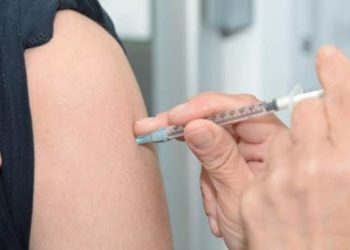Hospitals are not exempt from gun violence
Image: PD
1. From 2000 to 2011, there were 154 US hospital-based shootings, with a total of 235 victims.
2. Perpetrators of hospital-based shootings were predominantly male (91%), and the majority had personal relationships with their victims.
3. The most common locations for hospital-based shootings were the emergency department, parking lot, and patient rooms.
Primer: Consistent with a culture of increasing violence in the United States, workplace violence is becoming a more significant problem, with homicide being a leading cause of job-related deaths. Hospitals are not exempt and in fact, have higher rates of violence than other work settings. The use of magnetometers to screen visitors in hospitals is a highly debated issue with multiple logistical and financial barriers including the costs of machinery, expanded security personnel, and the need to monitor multiple entrances and exits.
Background reading:
1. Workplace violence prevention strategies and research needs.
2. Preventing violence in the health care setting.
This [retrospective review] identified 154 hospital shootings occurring in 40 states with 235 victims (2001-2011). Southern states experienced the most events (44%), followed by the West (21%), Midwest (20%), and last, the Northeast (15%). The risk for any individual hospital was consistent when normalizing for total number of beds. The most common locations for hospital-based shootings were the emergency department, parking lot, and patient rooms.
The majority of perpetrators (75%) of hospital violence targeted an individual or multiple individuals with whom they had prior associations. Perpetrators were most often male (91%), and spanned all ages. Overall, the perpetrator brought in the gun for the event (82%); however, in the ED specifically, the gun source was a security or police officer for 50% of the events.
Overall, the authors predicted that 30% of events could have been prevented using magnetometers with the majority of benefit inside the hospital in non-ED sites.
In sum: One limitation of this study was the method of identifying hospital shootings. If information regarding the event was not published or is no longer publicly available, this methodology could have missed the events.
In general, hospital shooting events are relatively rare, but hospital personnel must be aware of the risk, and security officers must adhere to safe gun carrying practices. Magnetometers are not currently a feasible or appropriate solution to reducing the risk of gun violence in hospitals. The cost of implementing these devices in hospitals is a significant concern, specifically because hospitals often have many entrances and exits. Additionally, the use of more armed security personnel in hospitals is not without risk, and it remains unclear if the introduction of more armed officers could ultimately lead to more gun violence rather than less.
By [SS] and [DB]
© 2012 2minutemedicine.com. All rights reserved. No works may be reproduced without written consent from 2minutemedicine.com. Disclaimer: We present factual information directly from peer reviewed medical journals. No post should be construed as medical advice and is not intended as such by the authors or by 2minutemedicine.com. PLEASE SEE A HEALTHCARE PROVIDER IN YOUR AREA IF YOU SEEK MEDICAL ADVICE OF ANY SORT.







